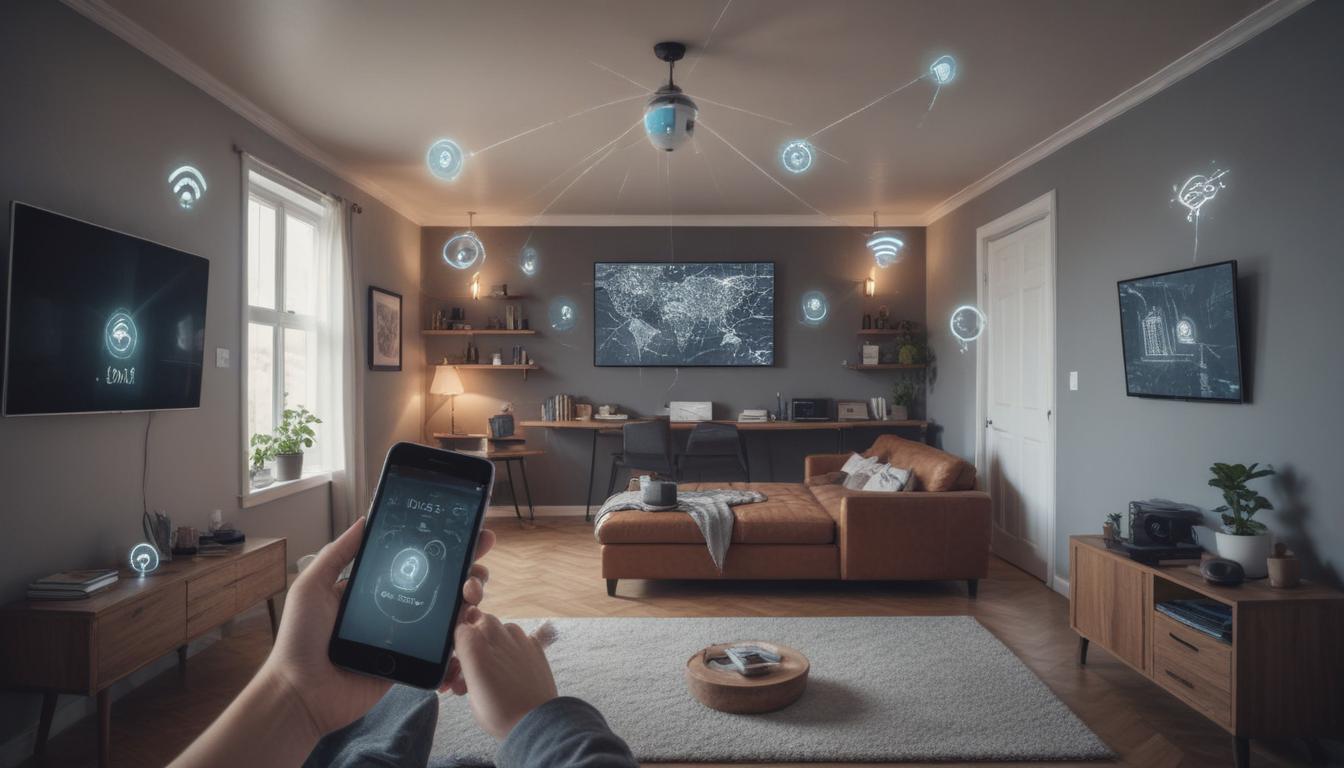Now Reading: IoT Security Risks You Can’t Ignore
- 01
IoT Security Risks You Can’t Ignore
IoT Security Risks You Can’t Ignore

Cybersecurity in the Age of IoT Protecting Your Connected Life
Your home is getting smarter. From the thermostat that learns your schedule to the security camera that streams to your phone, the Internet of Things (IoT) has woven itself into the fabric of our daily lives, offering unprecedented convenience. But with every new connected device, a quiet question often surfaces in the back of our minds. Is this convenience coming at the cost of my security? You worry about hackers watching through your cameras, stealing your data, or using your smart speaker to listen in on private conversations. This anxiety is valid. The very connectivity that makes these devices so useful also makes them potential gateways for cyber threats.
The good news is that you don’t have to choose between modern convenience and digital safety. Securing your connected world isn’t about becoming a cybersecurity expert overnight. It’s about understanding the fundamental risks and taking a few deliberate, powerful steps to build a digital fortress around your home and your data. This guide will walk you through the essential knowledge and actionable strategies you need to confidently manage your smart devices, transforming that feeling of vulnerability into one of empowered control. You can enjoy the benefits of a smart home while ensuring it remains your private, secure sanctuary.
The Hidden Dangers in Your Smart Home
The biggest challenge with IoT security stems from how these devices are made. In the race to bring innovative products to market quickly and affordably, many manufacturers prioritize functionality and cost over robust security measures. This often results in devices being shipped with weak or default passwords that are publicly known, software that is rarely or never updated, and network communications that are not encrypted. Each of these shortcuts creates a digital backdoor, leaving an open invitation for malicious actors to waltz right into your home network. Think of it like installing a new, high-tech front door but leaving the key under the mat with a sign pointing to it.
These vulnerabilities are not just theoretical; they have real-world consequences that can range from unsettling to devastating. A compromised baby monitor could allow a stranger to watch and speak to your child. A hacked smart lock could grant a burglar physical access to your home. On a larger scale, unsecured devices can be hijacked and corralled into massive “botnets.” These armies of infected devices can then be used to launch large-scale cyberattacks, like shutting down major websites or services, all powered by the innocent-looking gadgets in millions of homes. Your smart lightbulb or coffee maker could unknowingly become a soldier in a cybercriminal’s army, all because of a simple security oversight.

Building Your Digital Fortress Practical IoT Security Tips
Protecting your smart ecosystem doesn’t require a deep technical background, but it does demand a proactive mindset. By focusing on a few key areas, you can dramatically reduce your exposure to common threats and create multiple layers of defense. The goal is to make your network a much harder target, encouraging potential intruders to simply move on to easier prey. This process begins not with the devices themselves, but with the very foundation of your home network your router.
Secure Your Network Foundation
Your Wi-Fi router is the main gateway for every device in your home connecting to the internet. Securing it is the single most important step you can take. Start by changing the router’s default administrator username and password. This is the login you use to access the router’s settings, and manufacturers often use simple, universal defaults like “admin” and “password.” Leaving these unchanged is like giving a master key to anyone who bothers to check. While you’re in the settings, also change the network’s name (SSID) from the default, which often identifies the brand or internet provider, making it easier for attackers to look up known vulnerabilities.
For an even greater leap in security, create a separate guest network specifically for your IoT devices. Nearly all modern routers offer this feature. By isolating your smart speakers, cameras, and thermostats on their own network, you create a digital wall between them and your primary devices like laptops and smartphones, which hold your most sensitive personal and financial data. If one of your IoT devices is ever compromised, this separation prevents the intruder from “jumping” over to your main network and accessing your critical information. It effectively contains the threat to a less sensitive area of your digital home.
Manage Your Devices Wisely
Once your network is secure, turn your attention to the individual devices connected to it. The golden rule of IoT security is to change the default password on every single device you install. If a device doesn’t allow you to change the password, that is a major red flag, and you should seriously reconsider using it. Whenever possible, enable two-factor authentication (2FA). This security feature requires a second form of verification, like a code sent to your phone, in addition to your password, making it significantly harder for an unauthorized person to gain access even if they manage to steal your password.
Equally important is keeping your device’s software, or “firmware,” up to date. These updates aren’t just for adding new features; they often contain critical patches that fix newly discovered security holes. Go into each device’s app or settings and enable automatic updates if the option is available. If not, make a habit of checking for updates manually every month or so. Finally, practice digital minimalism by turning off any features you don’t use, especially remote access capabilities. Every enabled feature represents a potential “attack surface,” and reducing that surface area is a simple yet effective way to enhance your security.


































